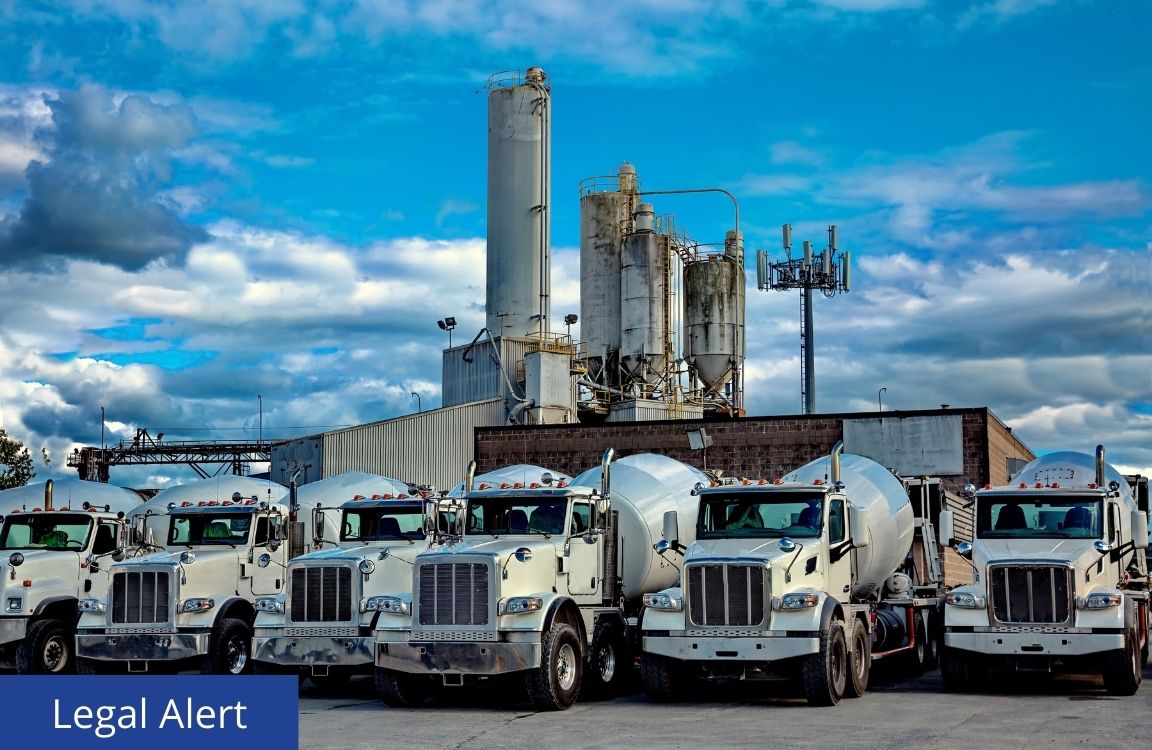
In an 8-1 decision, the United States Supreme Court ruled for the employer in Glacier Northwest v. Teamsters, Local 174 in a case that has significant implications for a union’s right to strike and for the targeted employer to respond to the strike with a court action for property damage.
In Glacier, the Court addressed whether the National Labor Relations Act (“NLRA” or the “Act”) preempts an employer’s state tort claim against a union “alleging that the Union intentionally destroyed its property during a labor dispute.” The Court held that the NLRA does not protect a union from state claims alleging the “Union took affirmative steps to endanger [an employer’s] property rather than [take] reasonable precautions” to protect the “employer’s property from foreseeable, aggravated, and imminent danger due to the sudden cessation of work.”
Glacier sells ready-mix concrete to its customers in Washington state. Each batch is mixed to the customer’s specification and is very perishable. Glacier’s ready-mix trucks can preserve concrete in a rotating drum, but only for a limited time. If the concrete remains in the rotating drum too long, it will harden and cause significant damage to the truck. If the drum stops rotating, the concrete begins hardening immediately.
Teamsters, Local 174 (“Union”) represents Glacier’s truck drivers. After the collective bargaining agreement between Glacier and the Union expired in the summer of 2017, the parties attempted to negotiate a new contract. On August 11, 2017, a Union representative signaled for a work stoppage after the Union knew that Glacier had mixed substantial amounts of concrete, loaded the batches into ready-mix trucks and sent drivers out to deliver the concrete. In spite of Glacier’s instruction to the drivers to finish the deliveries, the Union directed its members to ignore the instruction. At least 16 drivers returned their fully-loaded trucks. Seven drivers parked their trucks and notified a Glacier representative. However, at least nine drivers abandoned their trucks without a word to anyone.
Glacier had to solve several serious problems in a very short period of time. It could not leave the concrete in the trucks because the concrete’s inevitable hardening would significantly damage its trucks. However, because the concrete contains environmentally sensitive chemicals, it could not randomly dump the concrete out of the trucks. In a “mad scramble,” Glacier’s nonstriking employees built environmentally safe bunkers and managed to offload the concrete. After an extremely busy five hours, Glacier had saved its trucks, but the concrete that hardened in the bunkers was useless.
Glacier sued the Union in state court for common-law conversion and trespass to chattels. The state court agreed with the Union that the NLRA preempted Glacier’s tort claims. Glacier appealed, and the state court’s decision was reversed. The Union appealed to the Washington Supreme Court, and it reinstated the state court’s decision because the loss of its concrete “was incidental to a strike arguably protected by federal law.” After the Washington Supreme Court affirmed the dismissal of Glacier’s tort claims, the NLRB’s general counsel issued a complaint alleging that Glacier engaged in unfair labor practices in relation to its labor dispute with the drivers. However, the NLRB’s general counsel agreed that the NLRB’s complaint was not involved in the appeal to the U.S. Supreme Court.
The Court’s opinion in Glacier reaffirms that strikes remain protected activity included in Section 7 of the NLRA that provides employees with the right to “engage in . . . concerted activities for the purpose of collectively bargaining” including “the right to strike,” But also noted that the right to strike “is not absolute.” For example, the right to strike does not include the right to use violence, to violate a no-strike contract provision, or strike in pursuit of unlawful objectives “such as putting economic pressure on parties other than the primary employer.” However, in Glacier, the Court added to the list of unprotected activities that a union may be liable for economic damage that the union caused to an employer’s property if it failed to take “reasonable precautions.” The Court explained that “the ‘reasonable precautions’ test does not mandate any one action in particular,” but rather that “the Union’s failure to take even minimal precautions illustrates its failure to fulfill its duty.” By focusing on the facts of the case, the Court found it significant that the drivers reported to work and that “prompted the creation of the concrete” that was then poured into the trucks. The Court concluded that “[b]ecause the Union took affirmative steps to endanger Glacier’s property rather than reasonable precautions to mitigate that risk, the NLRA does not arguably protect its conduct.”
Glacier should make it easier for employers to pursue property damage claims against unions in state court, and the Court’s opinion and the “reasonable precautions” standard might be a disincentive for unions to call strikes that may result in an employer’s property being damaged.
If you have any questions regarding this decision, please contact your Labor and Employment counsel at Smith, Gambrell & Russell, LLP.

